Happy Belated New Year to the readers of Four Tines and a Napkin! Just wanted to start this post by saying this will be my last full, unabridged post for 2011 food happenings. Stay tuned for "Best Things I Ate in 2011," a few "Best Of" lists, and a conglomeration of "Blog-Shy" posts during 2011.
After taking the advanced baking class, "Classic French Macarons," at the Institute of Culinary Education, I stumbled upon a Groupon deal for a macaron-baking workshop at DessertTruck Works (DT Works). While Marcus and I learned quite a bit behind the "science" of creating the perfect macaron, it was still a lot of information overload, and attempting to make any on our own would still be a cloudy endeavor. As such, I felt a fresh new perspective from a rather hip and fun bakery like DT Works would help us better grasp "the moodiest cookie in the world" (as dubbed by our instructor at ICE). This was back in June.
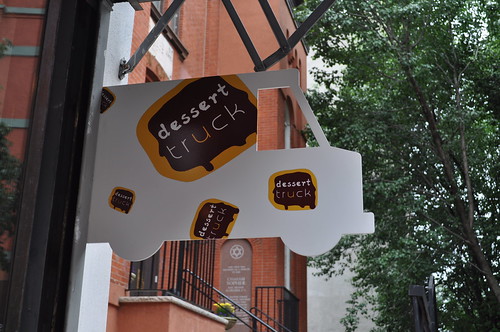
As I've mentioned before in my Macaron Day 2011 post, Jerome Chang, former sous pastry chef at Le Cirque, left in 2007 to start DessertTruck, a high-end dessert truck at "dressed-down" prices, with his business school friend, Chris Chen. It became a smashing success, leading them to open up this store front, DT Works, on the Lower East Side with two former Le Cirque alumni, Susana Garcia and Vincent Jaoura.
Findings: I have to say, after all this, DessertTruck Works offers some pretty comprehensive advanced baking workshops, easily accessible by baking novices and experienced baking veterans alike (more emphasis on the novices, of course). Chef Jerome Chang has a no-nonsense approach to the bakery's intensive workshops (whether it be for the fussy macaron or the scrupulous soufflé). His straightforward recipes and succinct explanations (for both background and procedure) during the workshops are key to their success. Chef Chang was able to say exactly why the recipe is written a certain way (e.g., why we use room temperature egg whites, why we butter and sugar ramekins) -- this makes for a more effective understanding of why the said recipe works, and it'll help you remember in the future when you're tasked with executing the recipe on your own. I also liked that it wasn't just a "demonstration" but a very hands-on experience -- your hands will get messy with flour and all sorts of baking tools and goodies.
Price point: a two-hour macaron-baking class (and a half dozen macarons) for $45, a two-hour chocolate soufflé-making class (and two soufflés -- one baked and one unbaked to take home) for $85; $22 and $39 with Groupon, respectively.
Inside DT Works, with an "island" baking prep station set in the middle of the shop, ready to be used by workshop participants.
Chef Chang started off the class immediately with a brief introduction about the macaron, how it is typically prepared in the culinary universe, and his experience with it as a pastry chef. He also asked if anyone had attempted to make them, and if they had, what problems had they run into. Then he followed this discussion with how we'd be addressing those problems in the workshop. He was very easy to understand as he was very straightforward with the process. Also, throughout the class, Chef Chang addressed many, if not all, of the "things that could go wrong" during the baking process. For these reasons, this workshop is great for beginners that are hoping to learn something as advanced as baking macarons.
We began by preparing the meringue. {1} After briefly whisking 50 grams of egg whites in a large heat-safe bowl, we put it over a {2} simmering water bath, whisking together with approximately 1/3 of 110 grams of granulated sugar. We then continued to gradually add the remaining sugar, {3} as the whites increase in volume, whisking until hot to the touch. {4} Removing it off heat, we continued whisking until the meringue became stiff.
{1} We were given a well-mixed bowl of 125 grams of blanched almond flour and 125 grams of confectioner's sugar, already blended in a food processor for 20 seconds, with no lumps. We finished the macaron mixture by {2} using a rubber spatula {3} to mix in another 50 grams of egg whites into the almond flour mix. {4} Next, we folded the meringue into the almond flour mixture, until it was all well-incorporated into the meringue, regularly running the spatula along the very bottom of the bowl. The final mixture was homogenous with a thick viscosity -- if anyone had a mixture that was too stiff, they added about 1 tablespoon of egg white at a time until the proper consistency is reached.
{1} After finishing creating the macaron mixture, Chef Chang gave us a choice of three shades of food coloring to add to the mixture -- red, green, and yellow. {2} Marcus and I picked red, adding few tiny drops to be sufficient. {3} We all thoroughly mixed the food coloring into our mixtures until {4, 5, 6} an even shade was produced.
{1} As far as piping goes, Chef Chang showed us an easier way to transfer the macaron mixture into a piping bag fitted with a straight tip (size #805) inside. He put a piping bag over a solid, plastic container that was deep enough to hold up the piping bag with most of the macaron mixture. {2} Cutting an appropriately sized hole and onto sheet pan (18" x 13") lined with a Silpat baking mat, we piped silver dollar-sized disks, {3} keeping the piping tip about 1.25" away from the surface of the sheet pan to ensure rounded tops of the macaron disks. {4} Normally, we would set the sheet pan aside to allow the surface of the macarons to dry (anywhere from 30 minutes to two hours, depending on the humidity). In a preheated oven at 300 degrees Fahrenheit, the macarons were baked for approximately 7 minutes, turning the pan halfway through the duration. The macarons are typically "deemed finished" when the tops are firm and dry, and the "foamy" base is dry as well. Upon completion, let the sheet pan with the macarons cool.
Marcus and I's finished sheet pan with piped macaron disks.
However, due to time constraints of the class, Chef Chang had macarons, baked and ready for us to which we would add center fillings. He removed the macarons by gently running an offset spatula underneath each one. Each macaron was then paired by size, lined up next to each other with one facing up in each pair.
We piped our desire filling (our choice of buttercream, marmalade, and ganache) onto one half of the macaron pair, then sandwiching each with the other half of the pair.
So woohoo! We successfully "made" macarons at DT Works, leaving with a half dozen each!
Several months later in October, I found another class deal offered for DT Works on Groupon, but this time for a chocolate soufflé-making class. I immediately nabbed two Groupons (one for me and one for Marcus) for this deal and signed up for the next available class in December. Since we had such a great experience with Chef Chang during the macaron-baking class -- he's a great teacher (as I've already illustrated above), especially for beginners for he is very precise, succinct, extremely knowledgeable, and patient -- I figured tackling something as notoriously challenging as making chocolate soufflés would be something he would teach very well, too. Plus, I've always wanted to learn how to make a great soufflé (I've never attempted before this class, actually), but I've always been too intimidated to do so. This was my chance to do it (and to do it right)!
The same "island" prep station inside DT Works, laden with the first ingredients and tools needed for the first steps of the soufflé recipe. Similarly to the macaron-baking class, Chef Chang discussed the history behind the finicky yet coveted dessert, debunked some common "myths" behind it, as well as his experience with this particular dessert. He also told us the recipe we would be using is adapted from the one used for the chocolate soufflé served in the past at Le Cirque.
After preheating the oven to 375 degrees Fahrenheit, Chef Chang had us {1} label our ramekins with some painter's tape, writing our names in marker over it and adhering it to the side. {2} Then we brushed the interior of our ramekins generously and thoroughly with softened butter (about 4 tablespoons), ensuring the entire interior was buttered (including the rim), followed by coating the buttered ramekin with sugar (about 1/2 cup), knocking out any excess sugar. The reason for doing this is so that the soufflé batter can rise easily within the vessel as it bakes in the oven.
We did the same with the foiled "ramekins" that Chef Chang said we'd prepare the batter for, but would be saved to bake at home. The soufflé within the porcelain ramekin would be eaten at the end of class.
Next, we placed 250 grams of egg whites, 3 grams of cream of tartar (lemon juice can substituted), and a pinch of sugar in a large bowl, {1} whipping (you can also use an electric mixer for this, haha) the egg whites, gradually adding 120 grams of granulated sugar to the mix {2} until we got stiff peaks (evidenced better in 3). This became our meringue.
While we were whipping the whites, Chef Chang had his assistant melt 150 grams of 70% dark chocolate over a double-boiler over simmering water, stirring occasionally. Chef Chang said it was very important that the chocolate still be warm/hot from the double boiler when combining it with the meringue. Same goes for the meringue -- he emphasized that we should not wait too long before combining with the chocolate. Otherwise, the chocolate fails to cohesively meld with the meringue (and instead, yielding chunks of chocolate chips in the mixture), and the meringue risks becoming too stiff.
{1} Similarly to how we transferred the macaron mixture to the piping bag, Chef Chang showed us the same method for transferring the soufflé mix for us to pipe into our ramekins. {2} Only difference is we used the same piping bag without the straight tip, just cutting a half-inch hole at the closed end of the piping bag. We piped straight down (90 degrees) into the ramekins, {3} using an offset spatula to level the tops of the ramekins so that the soufflé mix is evenly lined up within the ramekin. {4} There was one final touch we
had to do before we could put the ramekins into the oven -- we ran our thumbs along the inside edge of each ramekin rim. This is done so that the soufflés can properly rise without sticking to the rim of the ramekins. {5} Our ramekins were ready to be baked on the middle rack of the oven, {6} until they rose, forming a crust on top, but were still "jiggly" in the center, approximately 10-12 minutes, depending on the size of ramekins used.
And voilà! Marcus and I successfully made some pretty awesome soufflés -- they rose and everything :P! Plus, they tasted absolutely delicious, if I do say so myself! Sufficiently moist with an smooth and airy texture -- fluffy as can be and perfectly rich (just the right amount of bittersweet) chocolate. Almost like biting into a cloud, as I've heard someone describe before, only slightly firmer. I left, in awe, of the wonderful soufflés that Marcus and I made at the workshop together. So I guess the near impossible reputation and fastidious nature of the soufflé can be, indeed, conquered.
Findings: I have to say, after all this, DessertTruck Works offers some pretty comprehensive advanced baking workshops, easily accessible by baking novices and experienced baking veterans alike (more emphasis on the novices, of course). Chef Jerome Chang has a no-nonsense approach to the bakery's intensive workshops (whether it be for the fussy macaron or the scrupulous soufflé). His straightforward recipes and succinct explanations (for both background and procedure) during the workshops are key to their success. Chef Chang was able to say exactly why the recipe is written a certain way (e.g., why we use room temperature egg whites, why we butter and sugar ramekins) -- this makes for a more effective understanding of why the said recipe works, and it'll help you remember in the future when you're tasked with executing the recipe on your own. I also liked that it wasn't just a "demonstration" but a very hands-on experience -- your hands will get messy with flour and all sorts of baking tools and goodies.
In summary, I highly recommend the two current workshops (i.e., macaron-baking and soufflé-making) offered at DT Works, especially if you can nab a Groupon deal or two for them! Definitely go accompanied (makes it more fun!), and I promise you'll learn a lot, make great baked goods, and eat deliciously!
Price point: a two-hour macaron-baking class (and a half dozen macarons) for $45, a two-hour chocolate soufflé-making class (and two soufflés -- one baked and one unbaked to take home) for $85; $22 and $39 with Groupon, respectively.
--June 5, 2011 and December 27, 2011
DessertTruck Works
6 Clinton Street
6 Clinton Street
New York, NY 10002
http://www.dt-works.net
http://www.dt-works.net
Groupon
DessertTruck Works macaron-baking and soufflé-making class deals available here* and here*!
* These deals are no longer available at the moment, but keep your eyes peeled! Sign-up for Groupon, and maybe they will offer the deals again soon. Since taking this class, I've seen Groupon offer the deal one more time, so chances are, they'll be back!
* These deals are no longer available at the moment, but keep your eyes peeled! Sign-up for Groupon, and maybe they will offer the deals again soon. Since taking this class, I've seen Groupon offer the deal one more time, so chances are, they'll be back!



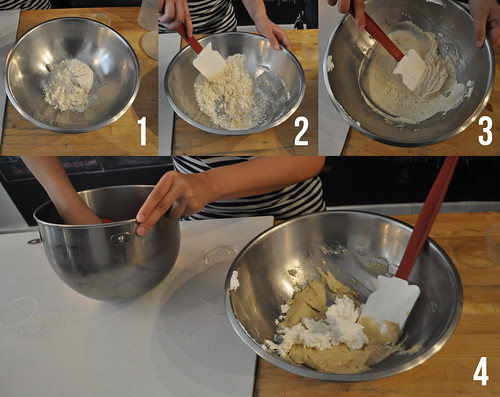
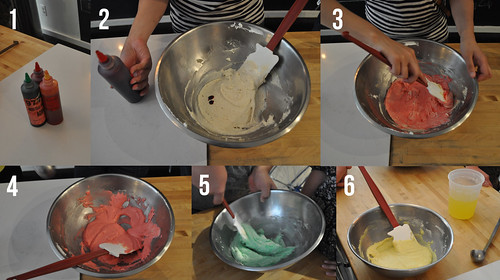
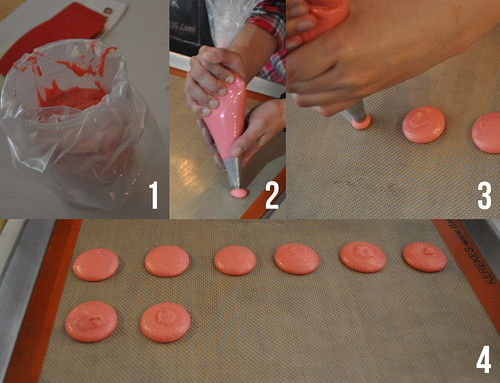
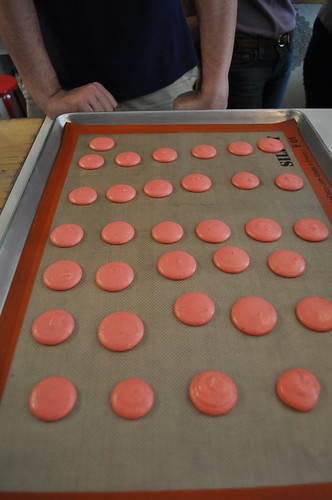
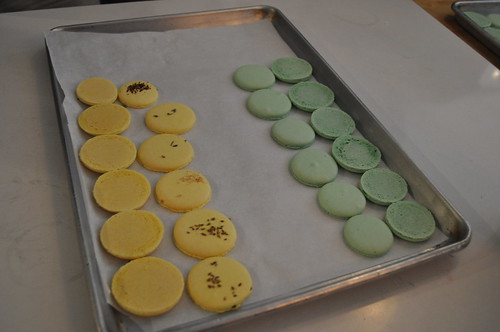
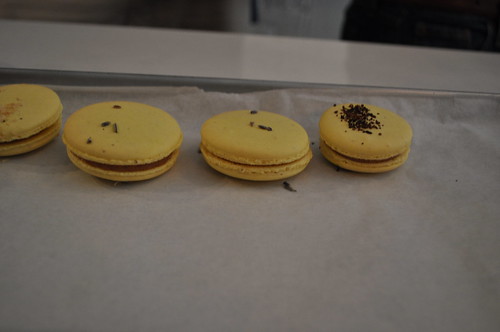




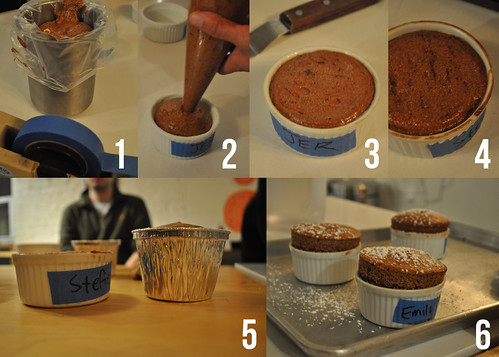

No comments:
Post a Comment